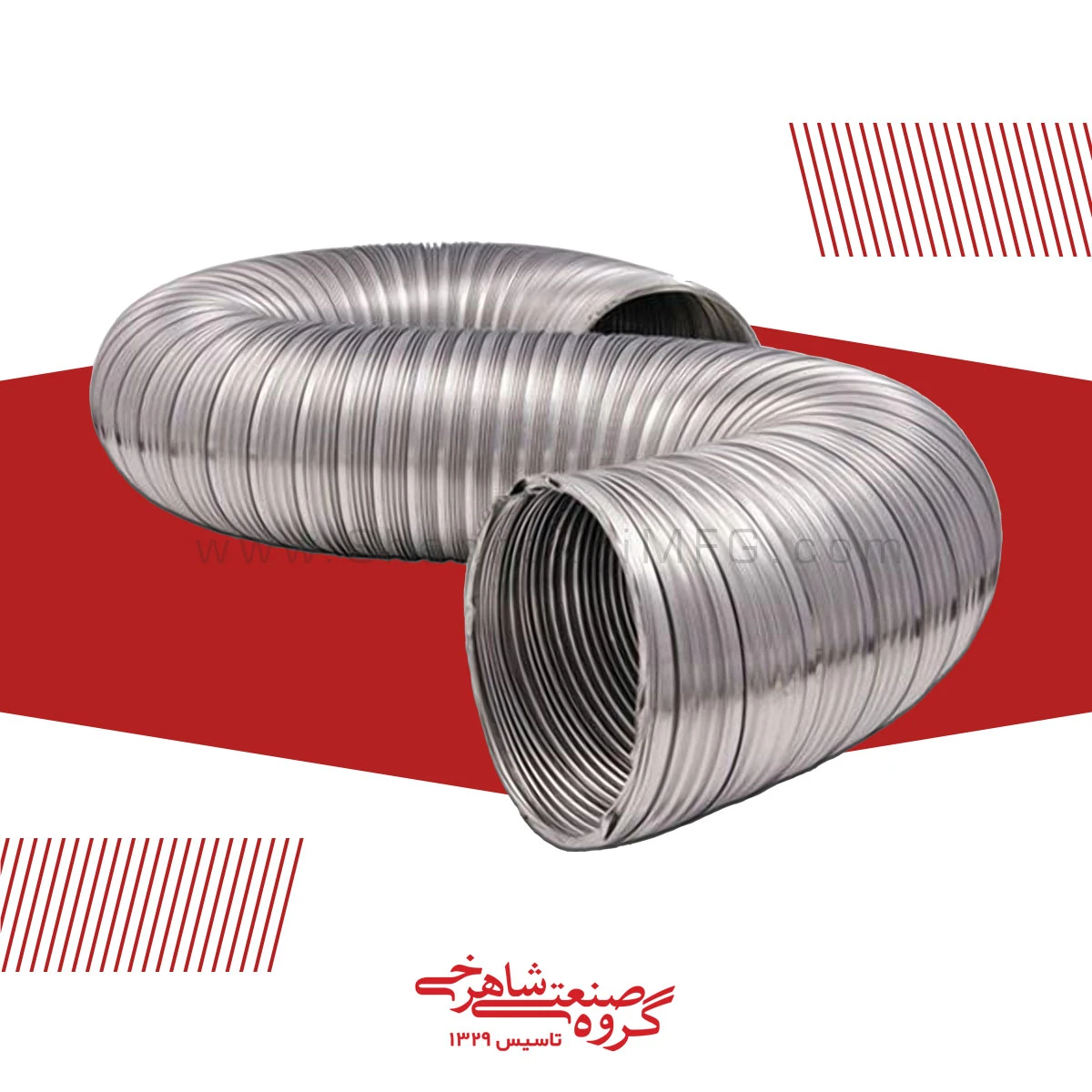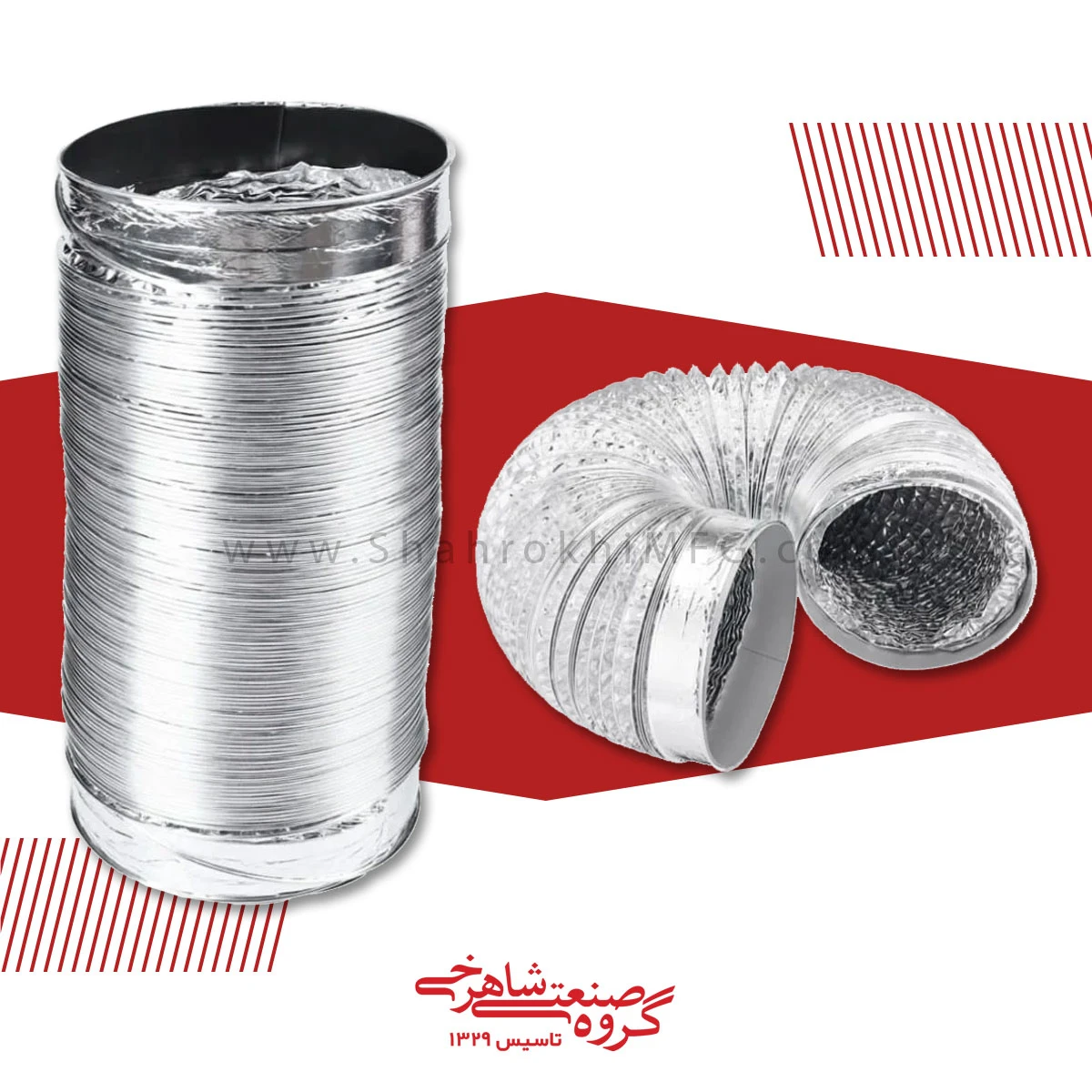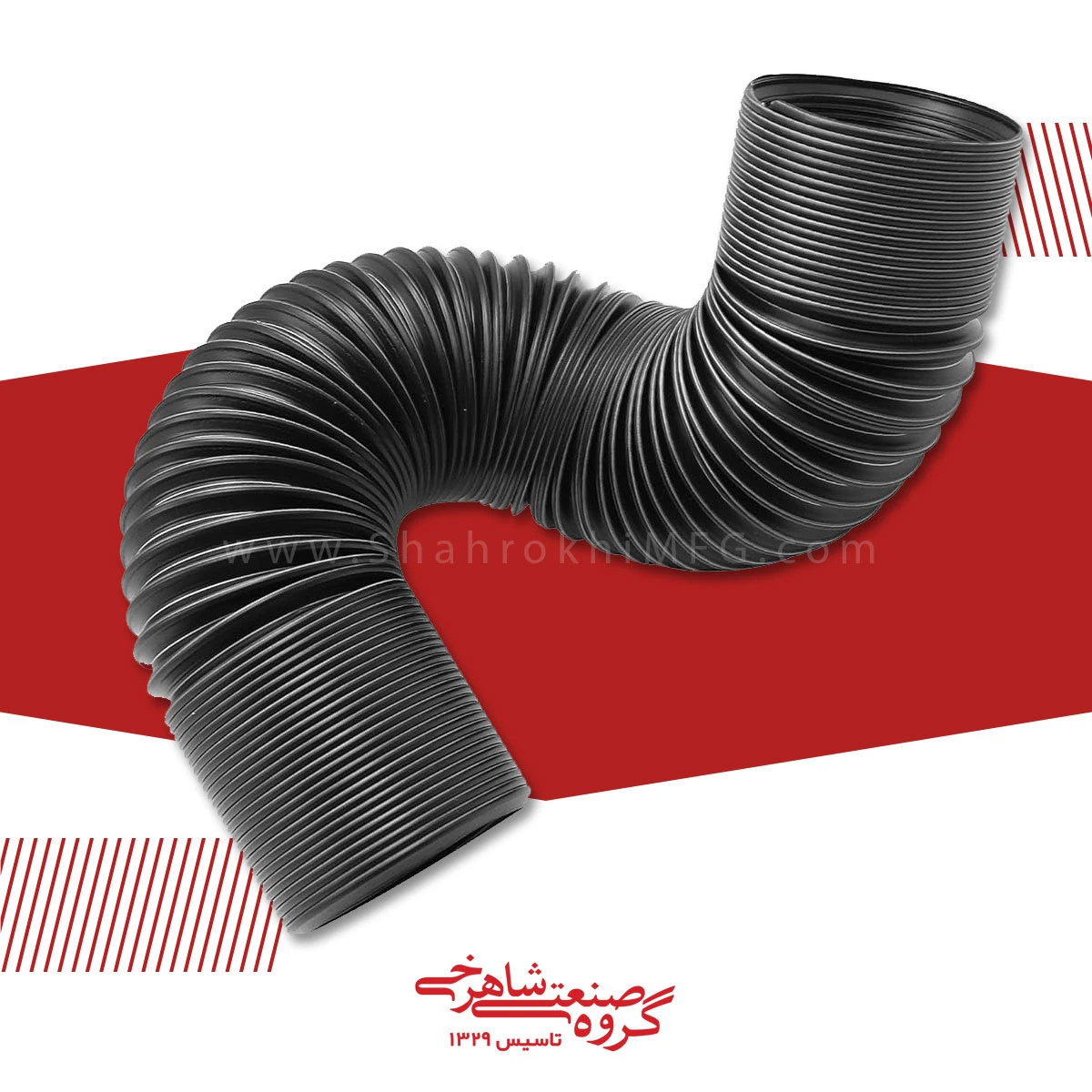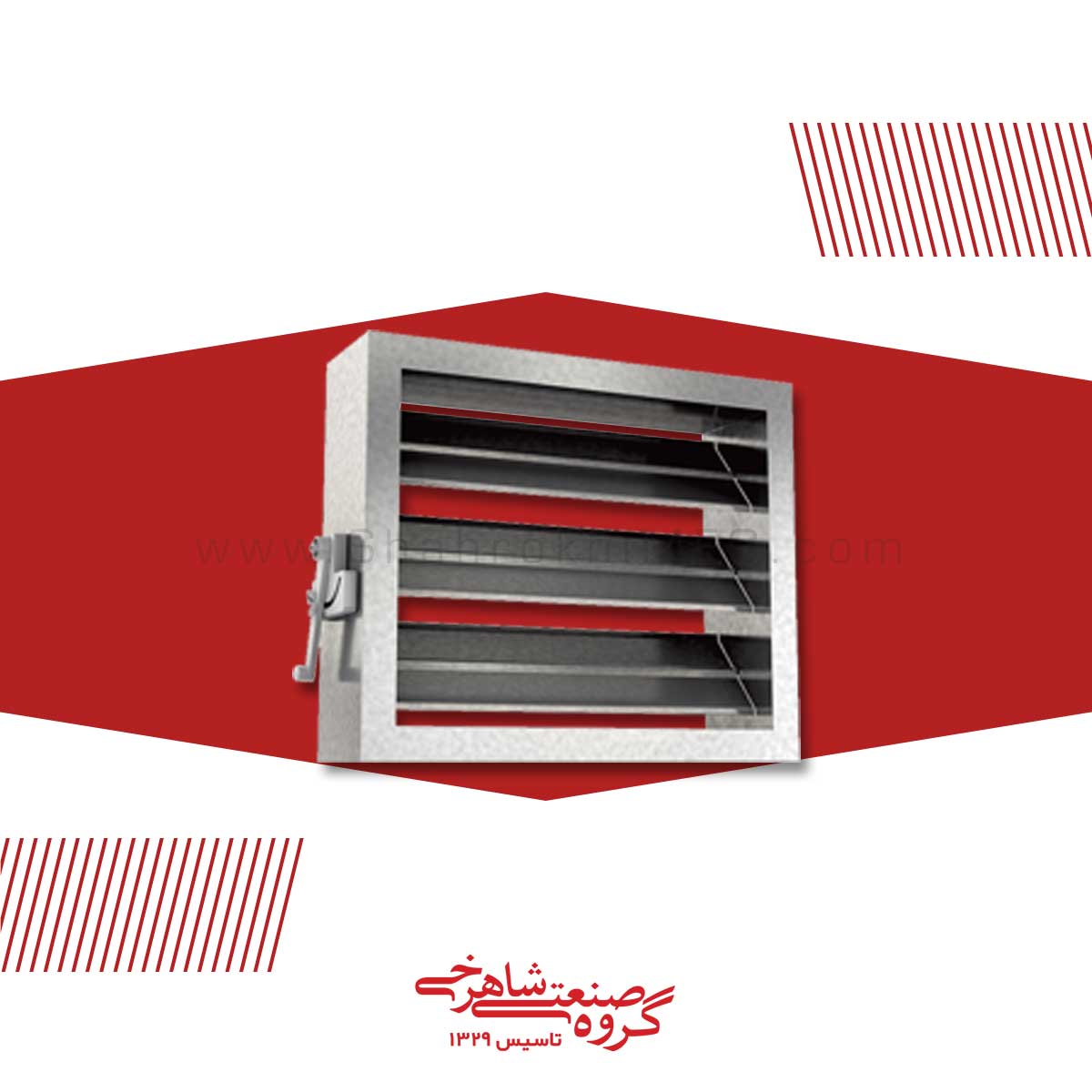Description
Flexible pipes are one of the important components in air conditioning and plumbing systems, which have wide applications in various industries due to their unique features. These pipes are a popular option for air conditioning contractors due to their high flexibility, ease of installation and relatively low cost. In this article, we will examine the characteristics, advantages and disadvantages of flexible pipes and examine their applications in various fields.
What is a flexible pipe?
Flexible pipes are a type of conduit pipe whose design is such that it provides more flexibility to be placed in narrow and limited spaces. These pipes can be placed in a spiral or rectangular duct and are easily installed in difficult places.
Features of flexible pipes
High flexibility: flexible pipes are easily placed in corners and limited spaces, and this feature makes them suitable for use in places with limited space.
Ease of installation: Flexible pipes are very easy to install due to their light weight and flexible design. This feature reduces installation time and cost.
Ability to shorten: these pipes can be easily cut and shortened, which makes them usable in different projects with different lengths.
Suitable for air conditioning systems: flexible pipes are an ideal option for piping in air conditioning systems due to their ability to be used in channels of 10 meters and more.
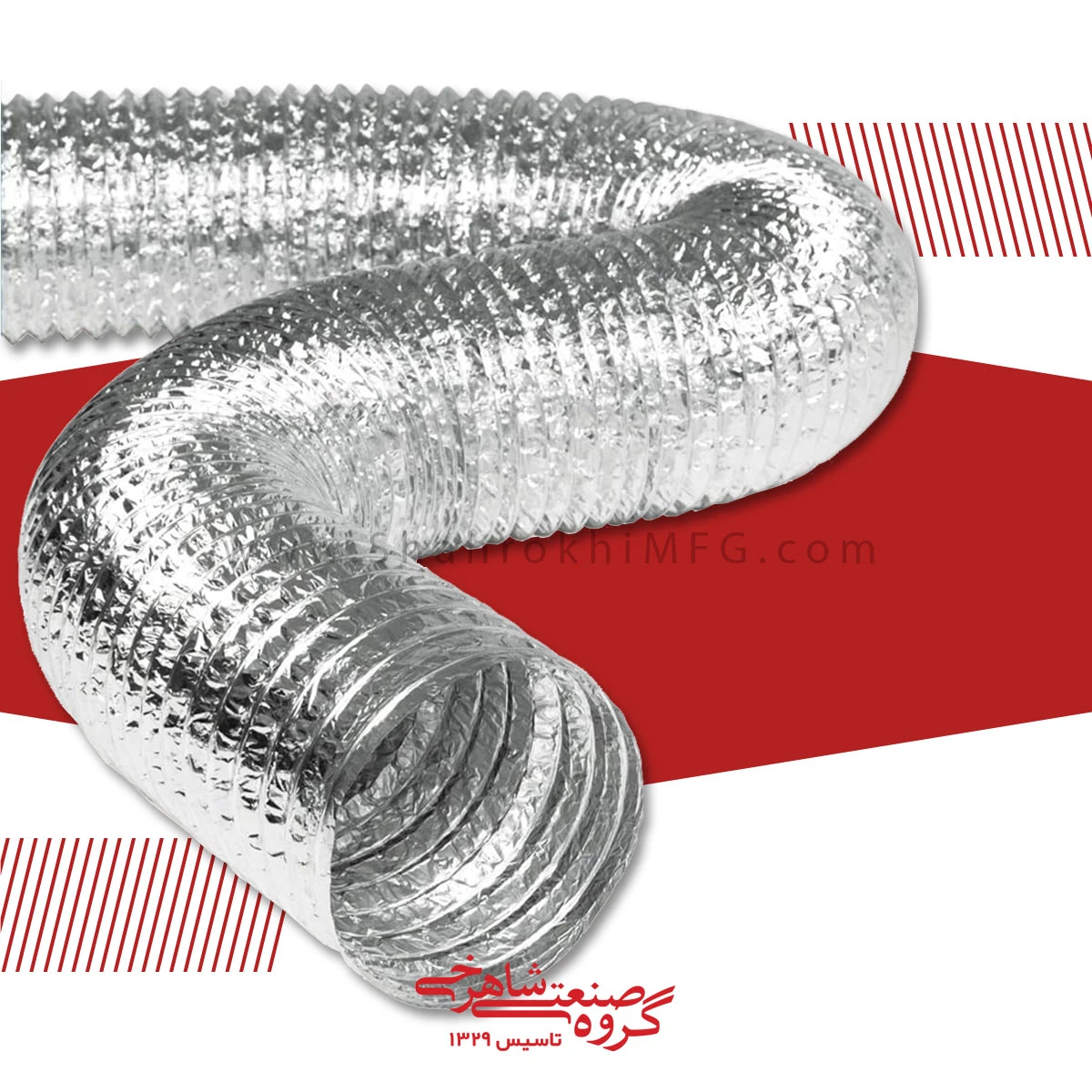
Advantages of flexible pipe
Cost reduction: Due to ease of installation and usability in difficult locations, overall project costs are reduced.
Reduced Installation Time: Quick installation of these pipes allows contractors to complete projects in less time.
Prevent leakage: Proper design of flexible pipe can help prevent leakage in air conditioning systems.
Disadvantages of flexible pipes
Despite the many advantages, flexible pipes also have significant disadvantages:
Low mechanical strength: Flexible pipes are vulnerable to excessive bending and mechanical stress. This feature can lead to their premature failure.
High airflow resistance: These pipes may create more resistance to airflow, which can affect the efficiency of the air conditioning system.
Limited life: Due to the materials used in the construction of this type of pipe, their useful life may be less than that of harder pipes.
Applications of flexible pipes
Flexible pipes are used in a variety of systems and locations:
Industrial ventilation systems: used in factories and workshops to transfer hot or cold air.
Home ventilation systems: used in homes for air conditioning and improving air quality.
Offices and commercial buildings: They are used to provide fresh air and proper ventilation in office and commercial spaces.
Flexible pipe is known as an effective and efficient option in air conditioning and piping systems. Despite their advantages and disadvantages, the correct selection of these pipes can have a great impact on the efficiency of ventilation systems. Knowing the characteristics and uses of flexible pipes helps contractors and consumers make the best decisions in choosing their ventilation systems. Considering the specific needs of the project, these pipes can be used in the best way and benefit from its benefits.
Flexible air transfer Pipes : an efficient solution to improve air quality and thermal efficiency
In today’s world, indoor air quality and thermal efficiency in buildings have become one of the most important factors in the design of heating, cooling and air conditioning systems. One of the key tools in this field are flexible air pipes. As flexible channels, these pipes play a vital role in delivering and discharging fresh and warm air in indoor environments.
What is a flexible air pipe?
Flexible air pipe or flexible air transfer channel is a conduit used in heating, cooling and air conditioning systems to transfer air from one point to another. Due to their special design and high flexibility, these pipes can be installed in a limited space and with different shapes. This feature makes the installation and commissioning of ventilation systems much easier.
The importance of flexible pipes in air quality
Indoor air quality is strongly influenced by air conditioning and ventilation systems. Using flexible air pipes can help improve air quality for several reasons:
Uniform air distribution: Due to its special design, flexible pipes can distribute fresh air evenly throughout the building. This makes all spaces benefit from fresh air and prevent the accumulation of pollution.
Reducing pressure drop: One of the common problems in ventilation systems is air pressure drop in transmission paths. Due to their special structure, these pipes minimize the pressure drop and thus increase the efficiency of the system.
Easy and fast installation: The flexibility of flexible pipes makes it very easy and fast to install them in different spaces. This feature helps reduce installation time and costs.
Calculations and factors affecting the performance of flexible pipes
The optimal performance of the flexible air transfer tube depends on several factors:
Channeling calculations: Correct design and accurate calculations about the dimensions and type of flexible pipes have a great impact on the efficiency of the system. Choosing the right size of pipes can help improve air flow and reduce pressure drop.
Pressure drops: Every pipe that transports air faces a pressure drop. This pressure drop can be caused by the length of the pipe, angles and connections. In the design of the system, this point should be taken into account to minimize the pressure drop.
Amount of air pressure: Inlet and outlet air pressure is another important factor. Checking and adjusting the air pressure in the ventilation systems can help improve the performance of the pipes.
Advantages of using flexible air transmission pipe
The use of flexible air transmission pipes has several advantages, including the following:
High flexibility: flexible pipes can easily be installed in limited spaces with complex designs.
Reduced installation costs: Due to the ease of installation, labor and time costs are reduced.
Light and small volume: These pipes are easier to transport and install due to their light weight and small volume.
Proper insulation: Flexible air ducts are usually thermally and acoustically insulated to help maintain temperature and reduce noise.
As an efficient and modern solution in heating, cooling and air conditioning systems, flexible air pipes play an important role in improving indoor air quality and increasing thermal efficiency. Considering the many advantages of these pipes, using them in the design and implementation of ventilation systems can help reduce energy costs. Therefore, the correct selection and installation of flexible air transfer pipes can be considered as a smart investment in the optimization of ventilation systems.

